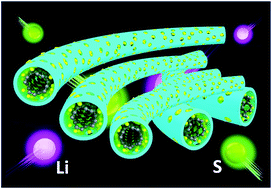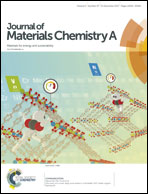Space-confinement and chemisorption co-involved in encapsulation of sulfur for lithium–sulfur batteries with exceptional cycling stability†
Abstract
The practical applications of lithium–sulfur (Li–S) batteries have been impeded by short cycling life and low sulfur utilization, resulting from the dissolution of intermediate lithium polysulfides into electrolytes and the large volume variation during cycling. This study presents a dual-confinement strategy to efficiently entrap lithium polysulfides and alleviate large volume variation by using N-doped tube-in-tube structured carbon tubes anchored on a 3D scaffold of graphene foam through the synergistic effect of spatial restriction and chemical interaction. This unique carbon hybrid structure provides sufficient empty space to confine sulfur with high loading, accommodate large volume changes during lithiation and de-lithiation, and facilitate better immobilization of polysulfides as demonstrated by first-principles calculations. Therefore, enhanced capacities, ultralong-cycling stability, and improved rate capability even with a high sulfur loading (∼5.6 mg cm−2) could be achieved.



 Please wait while we load your content...
Please wait while we load your content...